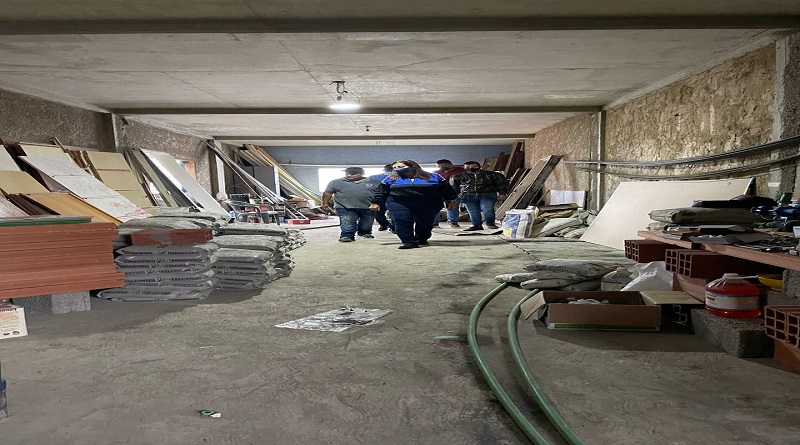Uruguay does not have a labor regime that stands out for being of few hours per week, but neither is it of very long hours compared to other countries.
Uruguayan labor legislation establishes that employees cannot work more than eight hours a day, nor more than 48 hours a week. And that is why the traditional formats are five or six days a week, depending on the weekly hours to be fulfilled.
“We are quite moderate,” said the president of the Human Management Association (AGH), Virginia Maruri, referring to the work scheme of the Uruguayans. And she explained that in addition to labor legislation being strong per se, its compliance is inspected by the Ministry of Labor and Social Security (MTSS).
But despite the regulations, the reality of workers in different areas shows that there are times when the maximum predetermined weekly working hours are exceeded. According to Advice’s human management manager, in some areas both the number of hours and days are flexible, but not for the better. Ximena Carbone recounted –by way of example– that sometimes positions of responsibility tend to have a dynamic that in recent years has gone from being full time (full time, in Spanish) to full life (complete life, in Spanish), being in many cases an exclusive requirement that the person has that availability to perform the function.
However, this is not a recommended practice. Nor is it a modality chosen by workers around the world who, for some time now, have positioned themselves in favor of reducing hours in the labor regime.
A trend that began to gain relevance in this regard is the four-day work week. Worldwide, there are several companies that have already tried this format with the aim of favoring their employees, and in many cases the results are favorable. But at the local level, companies have not yet made the leap; What steps must be taken to be able to establish a four-day work week?
Fewer working hours… four-day work week?
Carbone pointed out that well-being levels increase in people who work four days a week. “In a context where work flexibility and time for one are new luxuries, getting one more day off would be a great motivating factor for the workforce,” she said in an interview with Coffee & Business.
But – as was mentioned before – Uruguay is not one of the pioneers in following this trend of change in the labor regime. It is that in order to apply it, it is necessary to define a legal context that accompanies it, in order to maintain the set of rights and obligations of both employees and employers: “Establish how much the working day is reduced and the scope of the measure, if it is individual, corporate, sectoral or national. Also if it will be a temporary or permanent measure. And not to mention how the actors participate in the financing, ”said Maruri.
In addition to the country’s legislation, companies have to discuss the benefits and harms they find in this new regime, because as with any other paradigm shift there is resistance. For example, companies question whether it is possible to maintain their productivity levels in the face of a reduction in the workload.
These discussions have already taken place worldwide, with countries like New Zealand acting as guinea pigs.
“The possibility is there,” Carbone said about the installation of a four-day work regime. “We have to rethink it, especially now that we are going to work for more years,” he added in relation to the modification of the regulation on social security that is increasingly closer on the horizon. He also considered that the automation of some of the tasks can encourage a gradual change that allows rediscovering a world of work with a better balance.
Reduced hours for lower salary
Companies are concerned about the level of productivity, and employees –although many are in favor of this trend–, are wondering about the salary level. For employees to define whether it is convenient for them to work fewer days a week, it is essential to determine whether there will be a reduction in salary or not and, if so, how much it will be.
However, Carbone said that there are companies in which the four-day workday has been implemented without giving up salary because they aim at productivity. “It’s a gamble,” she stressed.
In other cases, it has been implemented but on an optional basis for workers, with the consequent acceptance of a voluntary salary reduction. Surely in a high percentage this is not attractive or a possibility. However, in many cases, you may be willing to give up income in pursuit of a better quality of life. “It has to do with income in the family as a whole, and with an individual income level,” said Advice’s human management manager.
relearn
The arrival of the four-day work week in the country has to do fundamentally with learning, unlearning and relearning to work in a new way; new model and new conditions. “In the style of a renewal of an employment contract,” Carbone said.
To conclude, the president of AGH stated: “I do not see a trend towards reducing the working day in Uruguay.”
The current work model and chronic stress
Burnout has been a recurring theme in recent years in the workplace. And the pandemic increased a trend that was already gaining strength, given that at the work level many people went through long periods of uncertainty and work under pressure that made the appearance of symptoms related to chronic stress more likely.
The telework modality –which combined work contexts with personal settings–, and the reality of many employees who lost their jobs or suffered intermittent income implied sustained uncertainty over time that facilitated the development of symptoms linked to burnout.
But that was in a particular context. “We do not consider that the appearance of chronic stress is related to the work dynamics of our country, but to specific characteristics of certain contexts, whether organizational or personal,” said Advice’s human management manager, Ximena Carbone.
Finally, he said that it is important to highlight that for this situation to arise, there is a combination of factors related to the context, but also with personal predisposition factors.







